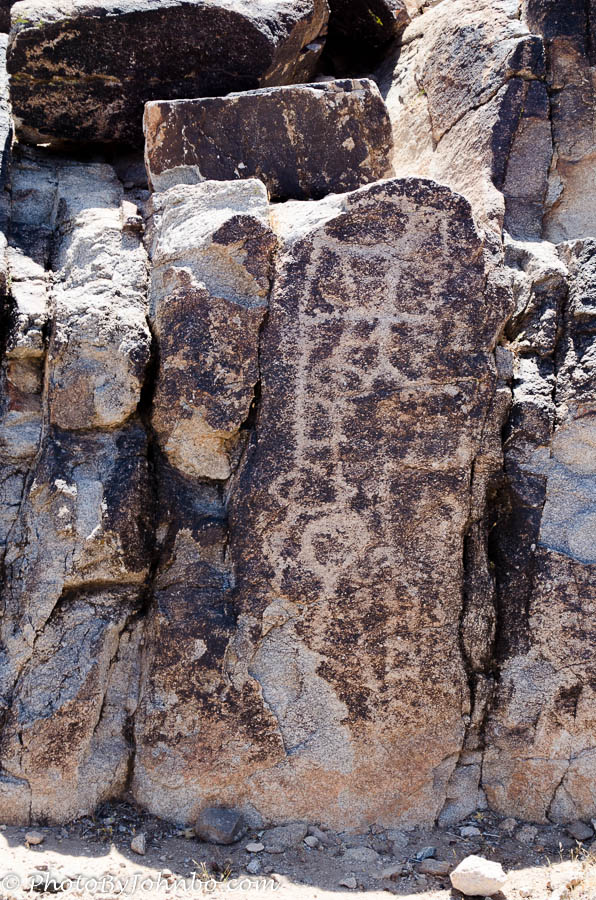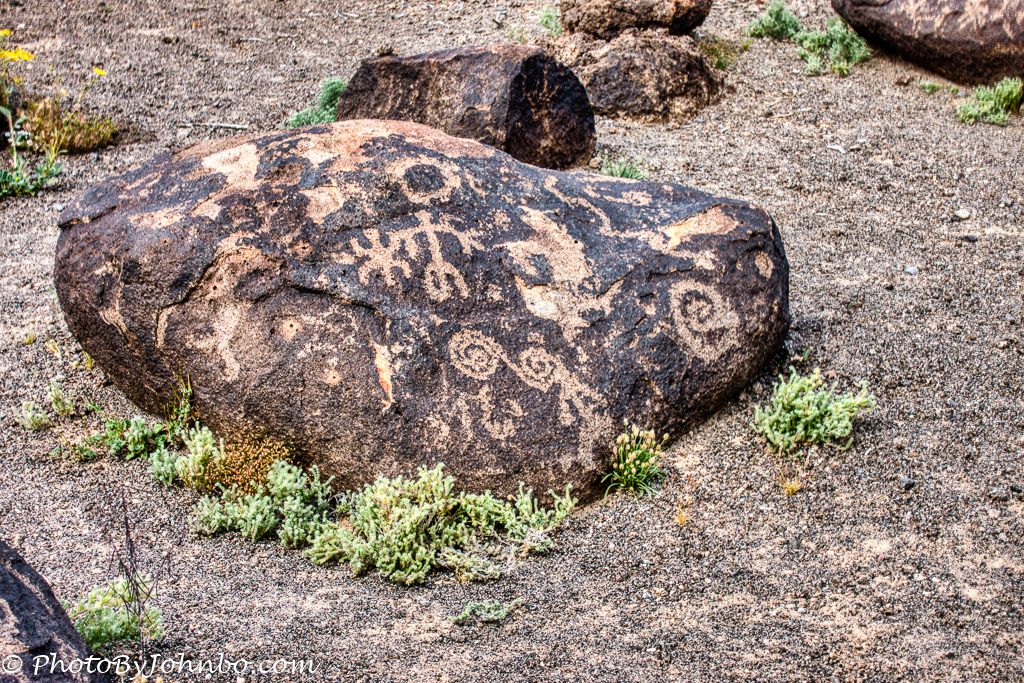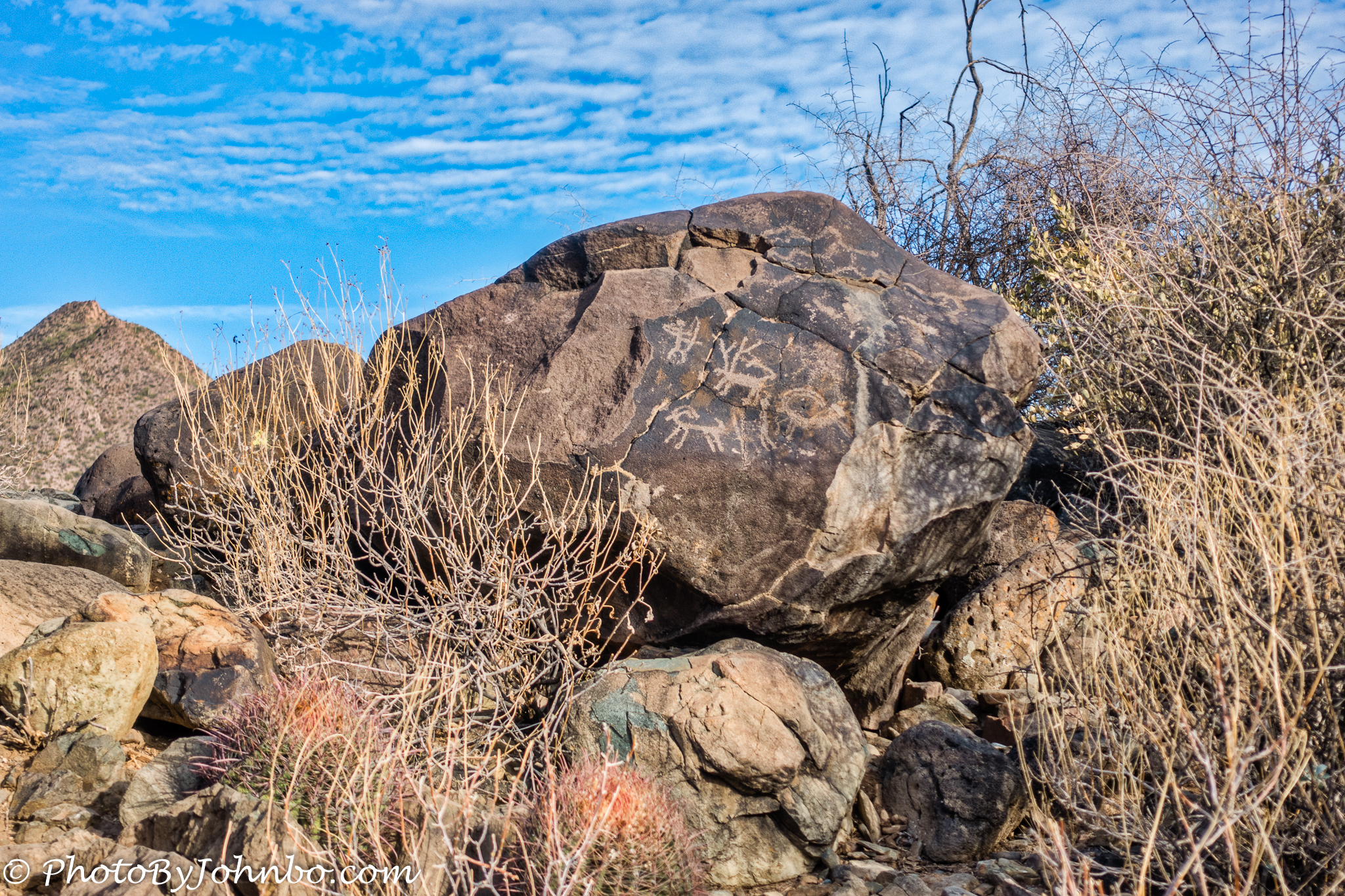
This week is unusual in that we got our photo challenge instructions from Biasini. What’s unusual is that Biasini is a horse. Though unable to talk, a horse’s conversation with the rider is part and parcel of horsemanship. The challenge this week is to share our thoughts on communication.
Today we think of writing on objects such as buildings as graffiti unless they are legitimately authorized, then they are murals. In earlier times, though, painting on rocks was quite common in the desert southwest. These images, hundreds, if not thousands of years old, have survived for archeologists to wonder and speculate as to their meanings. The opening photo, as in all the photos in my response are from petroglyph sites near Phoenix, Arizona.
The largest petroglyph site I’ve visited is near Gila Bend, about 68 miles (109 km) from Phoenix. Known as Painted Rock Petroglyph Site, it is closest to the town of Theba. An associated campground is a popular place in the cooler Arizona winters. The image above is but one of the many painted rocks found on a natural mound of rock outcroppings.
A more modern form of communication for visitors of the site is the typical plaque murals that describe details of the history of the site. While modern man cannot decipher the petroglyphs, most of us can at least read the signs. 🙂
There are many petroglyph rocks in the White Tank Mountains, just a few miles from our winter home in Buckeye. Many hiking trails we are on find us passing by painted rocks.
There are those who believe that these writings are from ancient aliens who landed on our planet, left us written signs, and then moved on to other planets to explore. I say, “Bullfeathers.” If an alien being has the knowledge and ability to travel interstellar space, they have far better methods of communication than writing on rocks. Here, let me put on my tinfoil hat and show you. 🙂
Thanks again to Biasini the horse for hosting this challenge. You can read that entire challenge post here.
John Steiner



Hello John Human. Thanks for responding to my challenge. Ma Leueen showed me your photos and I was very interested. We horses have our ancestor memories and I know that a long long long time ago in human time we lived among the people who did these drawings. I think they were humans and not from somewhere else in the stars but I have no proof of that. Ma Leueen tells me there are drawings of horses 🐎 in caves in a country close to where I was born in Germany. Anyway thanks for this response. 🐴
Please relay to your human how much I enjoyed this week’s challenge and the opportunity to engage in inter-species communication!
John, great post! We must be on the same wavelength this week as I was thinking about including some petroglyphs in my response to the challenge!
Thanks. I got the hint from another post that featured Egyptian hieroglyphics. >grin<
LOL for your tinfoil hat John! But perhaps the aliens knew how backwards WE were and tried to reach us at our own level!!! But seriously, have we NO idea who left the petroglyphs and why?
Good question, one that I could have addressed in the post. The “why” is a bit fuzzy, but the “who” is probably the Hohokam, an ancient civilization that brought irrigation canals and farming to southern Arizona. Archeologists believe that a long period of drought led the Hohokam to abandon the area in the late 14th to early 15th centuries.
Excellent. I think petroglyphs are a good example that people naturally want to communicate. Good point on the aliens. Surely that wasn’t the best they could do. 🙂
Thanks. It would be interesting to know if they have meaning or if they are aimless doodles. >grin<
Excellent take on, John – and as for aliens…I’m with you.
Thanks!
These petroglyph rocks are historical, and very special. It would be interesting to know a little bit of these signs. Great take on, John.
Thanks!
Fabulous petroglyphs, John. Another site I’ll have to explore when we’re in AZ again. I hope all’s well with you.
Thanks. This petroglyph site is worth the trip from Phoenix, especially if you want to camp there.
It’s definitely a must-see.
Wonderful entry, John.
Thank you!